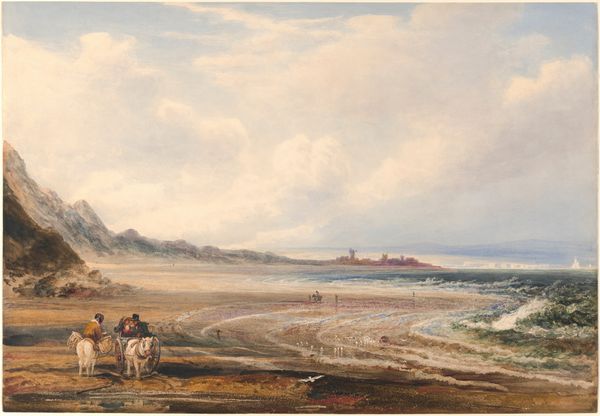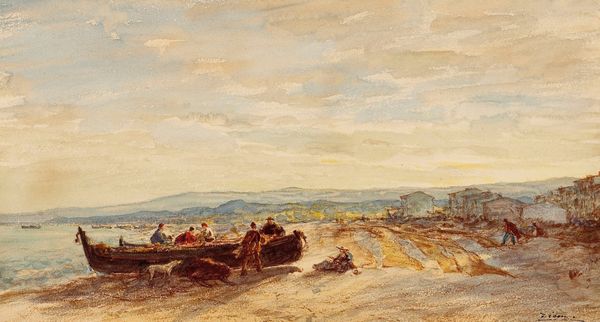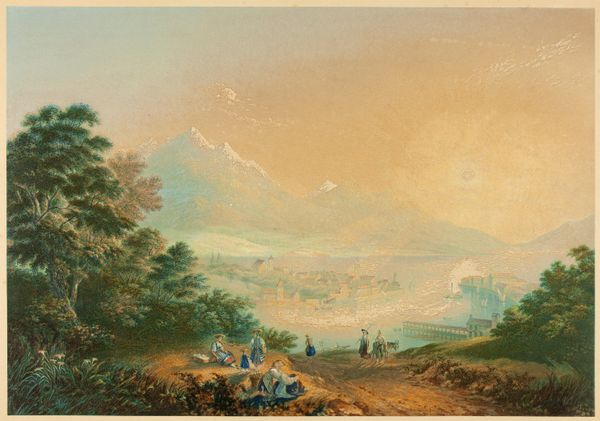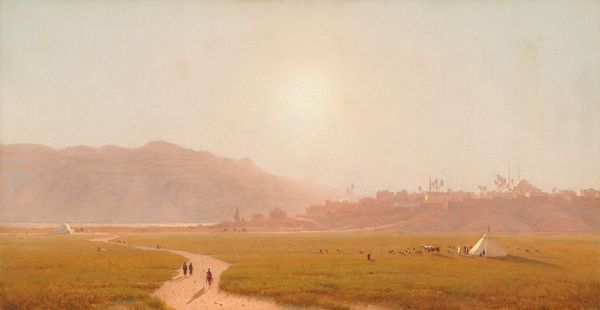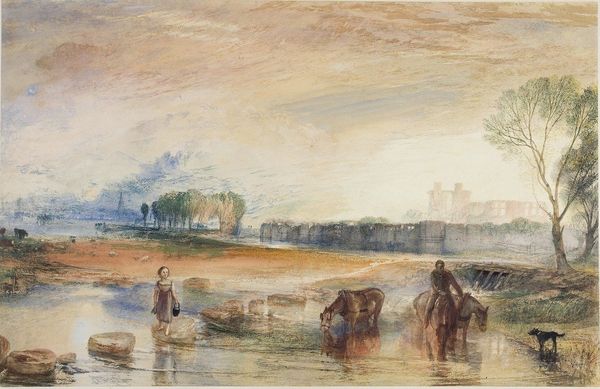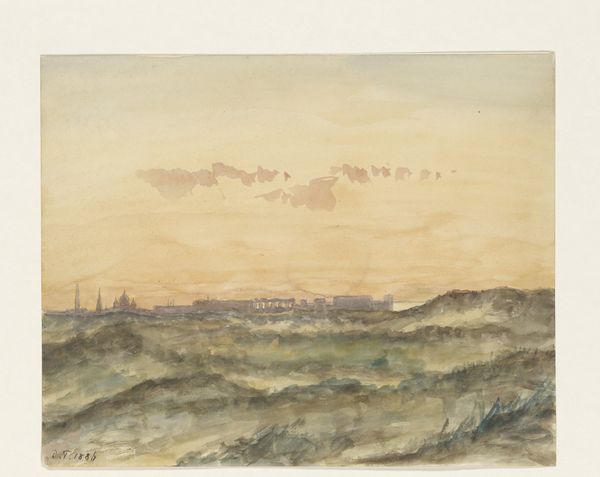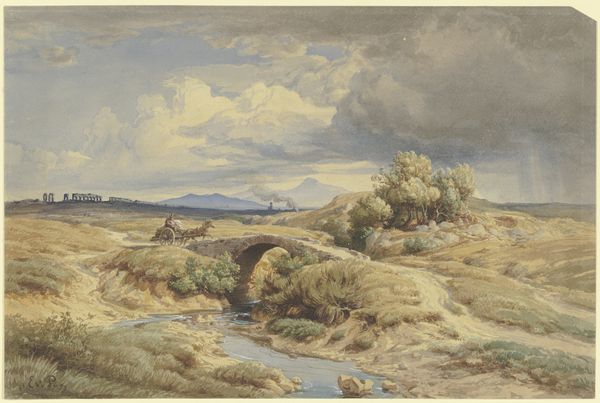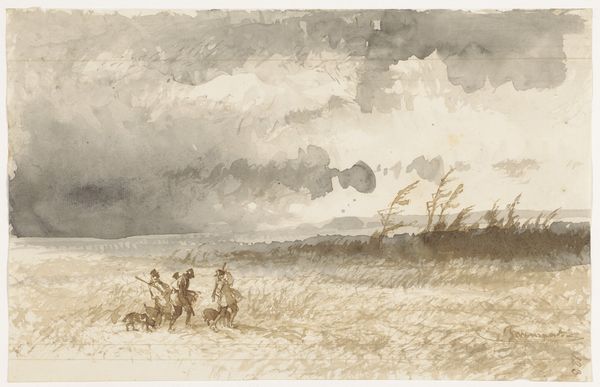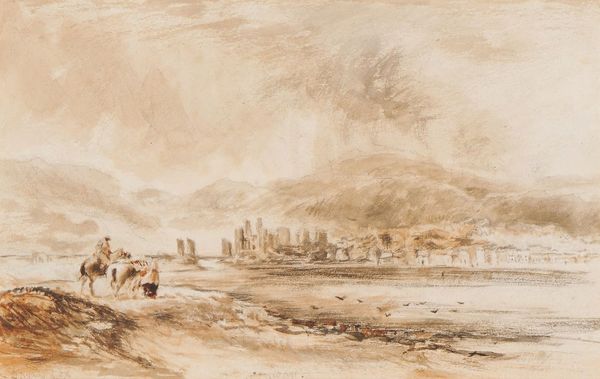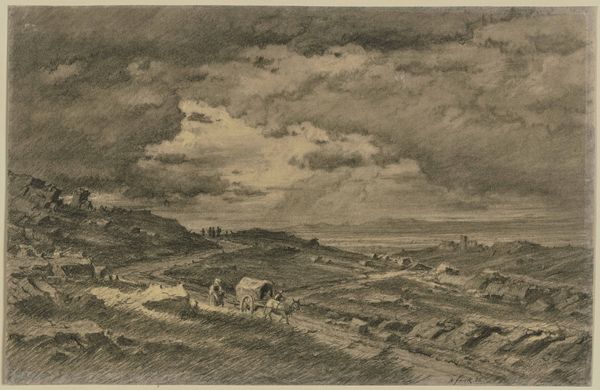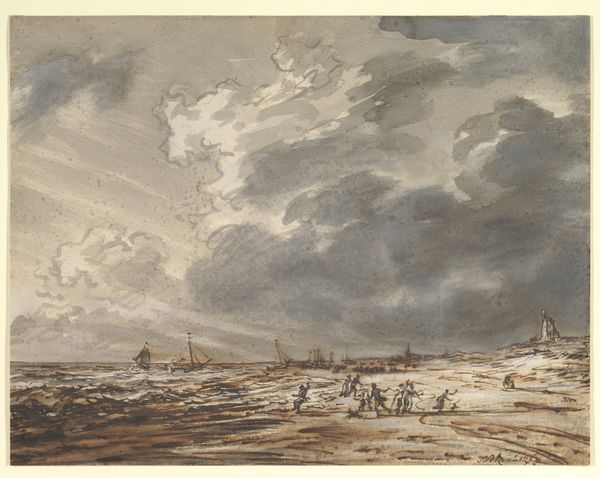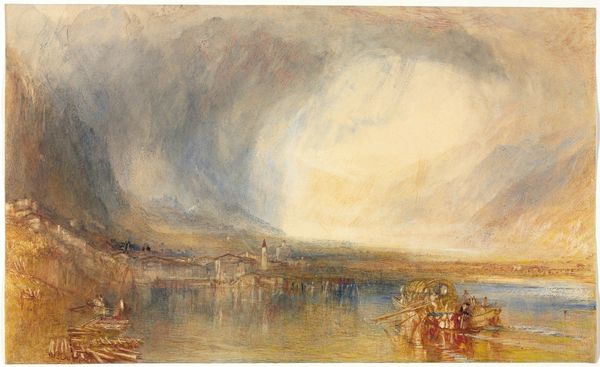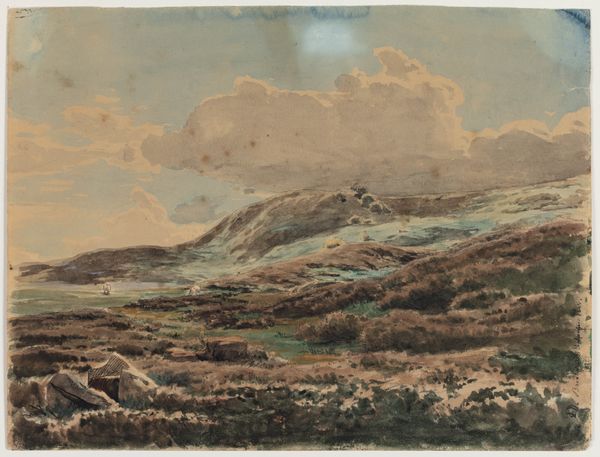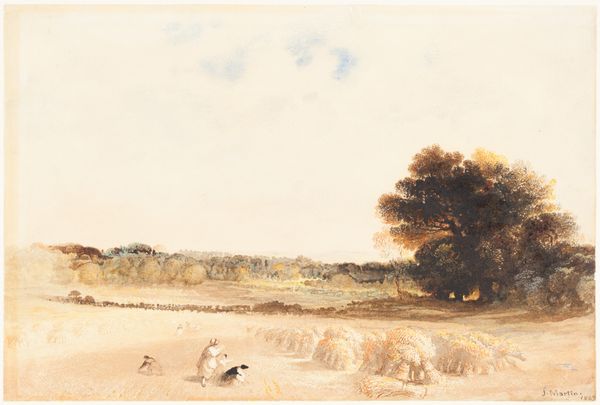
drawing, plein-air, watercolor
#
drawing
#
plein-air
#
landscape
#
oil painting
#
watercolor
#
romanticism
#
watercolour illustration
#
watercolor
Dimensions: image, sheet: 12 1/2 x 18 13/16 in. (31.75 x 47.78 cm)23 3/4 x 29 7/8 x 1 in. (60.33 x 75.88 x 2.54 cm) (outer frame)
Copyright: Public Domain
Editor: So, this watercolor and pencil drawing, "Cannes," was created around 1839 or 1840 by Paul Huet, who worked *en plein air*. The sunlit scene feels… optimistic, but there's something about the almost bleached-out color that hints at transience. What do you see in this piece from your perspective? Curator: I see the unfolding of early tourist culture, subtly intertwined with existing social structures. Consider that Huet, a French artist, is depicting a coastal scene increasingly visited by the European elite. Who is he painting for, and what assumptions does he make about their gaze? The 'optimism' you mentioned might actually be a calculated aesthetic designed to appeal to wealthy travelers seeking picturesque views and an 'authentic' experience of local life. Editor: So the image is performative, almost? Like a stage set for tourists? Curator: Exactly! Note how the locals are positioned - almost arranged - in the foreground, performing everyday tasks that likely appeared 'exotic' to a northern European audience. What might this seemingly innocent watercolor tell us about the dynamics of power and representation inherent in early tourism? Also, consider the rise of the "plein air" movement at this time. Why were artists suddenly so concerned with painting outside? Editor: I guess it allowed for a more "realistic" or immediate portrayal of the landscape and light. Maybe it catered to this desire for authenticity you mentioned? But could it also be about asserting a kind of ownership, a visual claiming of the territory through art? Curator: An excellent point! The act of painting *en plein air*, capturing a specific location in a specific light, becomes a form of possession. It connects to a broader European phenomenon of exploration and colonization, albeit in a softer, more aestheticized way. What I initially interpreted as “optimism” in the scene, combined with my developing understanding of this piece has greatly transformed how I perceived it before. Thank you for highlighting this key detail! Editor: It makes me realize how even a beautiful landscape can carry complex socio-political undertones.
Comments
No comments
Be the first to comment and join the conversation on the ultimate creative platform.
